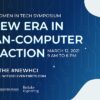Source: Course description
This course provides an introduction to the discipline and methods of the Digital Humanities. It is part history, part theory, and part practicum, designed to:
Help you situate the application of digital methods (and yourself as a scholar) within the wider disciplines of the Humanities in general and the Digital Humanities in particular.
Introduce a range of frequently applied methods and explain their application, benefits, and limits.
Teach the basic skills needed to begin applying digital methods in your own scholarship.
The course is introductory in nature, as the once small Digital Humanities toolkit has grown to include computing practices from simple text encoding and manipulation to the most advanced forms of machine learning and artificial intelligence. Upon completion of the course, you will have mastered several of these techniques and have a good understanding of many more that are available and, more importantly, have the technical foundation to independently pursue their application.
A final note: As reflected in the course catalogue description, you need have no prior programming experience to succeed in this class. We will, however, spend a significant portion of the class learning and applying computer programming skills. Fear not! One need not be a master programmer to successfully apply Digital Humanities methods. We will meander together through the exercises in order to understand the computational logic that drives current practices. This understanding is essential to successful application of digital methods and, perhaps more importantly, accurate interpretation of computational results.





